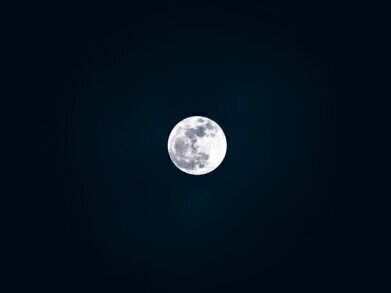News & Views
What Is the Supermoon?
Nov 24 2016
People all over the world have been looking up to the sky at night to get a glimpse of the latest astronomical craze. The “supermoon” was pretty well documented on the news and across all the social media platforms – with some pretty terrible attempts to photograph the phenomenon. But what exactly is it? Read on to find out what causes the supermoon, how often it occurs and whether it’s really all that super.
Behind the name
To put it simply, the supermoon occurs when the moon is closer than usual to Earth. It is, of course, the same moon. But it appears about 7% bigger in the sky because of its changed proximity. The moon was also around 15% brighter, but that’s not as easy to see.
It was 14th November 2016 we were told the supermoon would be visible in the UK, with 11.21pm the time of its closest proximity. At that point, it was 221,524 miles from earth. Not quite touching distance, but comparatively close. Ordinarily, the moon is at least another twenty thousand miles away from us. So why has it come so close?
Basically, it’s because of the moon’s oval orbit. It doesn’t maintain its distance from the earth as it orbits every 27-28 days. Some would assume then, that the supermoon happens every month. Unfortunately not. Another condition has to be met – namely, a full moon.
Lunar coincidence
As the moon moves around the earth, different proportions of its surface are lit by the sun, while others are in the earth’s shadow. This is what makes a supermoon so rare, and so ‘super’. It’s when a full moon coincides with the closest point in the moon’s orbit. It only occurs once in a blue moon (pardon the pun). The last one was in 1948 and it won’t happen again until 2034.
Because of the nature of the moon’s orbit, the difference in perceived size is gradual. It isn’t just suddenly 20,000 miles closer. A direct comparison between the moon at its closest and furthest points would be the best way to emphasise the differences. It’s also complicated by local weather. The cloudy UK skies meant the best time to see it was at around 5pm, rather than its closest point at 11pm.
The power of light
Of course, it’s not just the moon that’s effectively shaped by the light from the sun. Most things down on earth are powered by light in all its different forms. ‘Bright Lights, Big Science’ looks at how light permeates every aspect of our lives in ways me might not even be aware of.
Digital Edition
Lab Asia 31.2 April 2024
April 2024
In This Edition Chromatography Articles - Approaches to troubleshooting an SPE method for the analysis of oligonucleotides (pt i) - High-precision liquid flow processes demand full fluidic c...
View all digital editions
Events
Apr 22 2024 Marrakech, Morroco
Making Pharmaceuticals Exhibition & Conference
Apr 23 2024 Coventry, UK
Apr 23 2024 Kintex, South Korea
Apr 23 2024 Seoul, South Korea
Apr 24 2024 Jakarta, Indonesia




.jpg)













